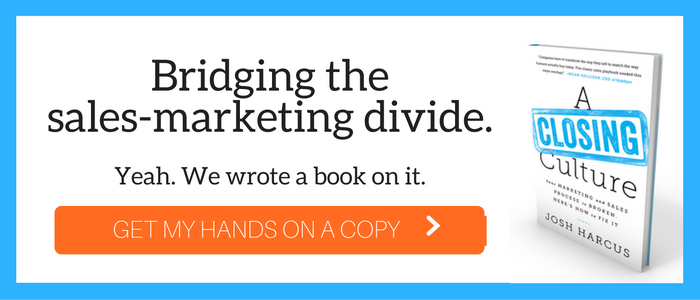
If you have any hand at all in your organization’s digital marketing, you’ve probably heard this before: “Oh I know…let’s do a webinar.”
Genius. Pure genius.
So now here you are, with social posts scheduled, reminder emails sent, and all of your registrants logged on and ready to go. The host goes through the presentation as rehearsed but the viewer numbers start to drop.
Why?
While webinars are an excellent way to get in front of your audience and get them invested enough to move on to the next step, they aren’t as easy as setting up a camera and hitting record. Successful webinars take time and preparation…and mostly importantly, are not glorified demos.
You can find a ton of information on the Internet about how to set up a webinar to register and run correctly, but these articles are overlooking the most important part of making a webinar successful—the content.
SEE ALSO: The Purpose Of Inbound Blogging And 3 Major Pitfalls To Avoid
Focus On Educating
To build the best webinar content possible, we must understand why people sign up for and attend webinars in the first place.
People register to be educated on things they didn’t know. People mark their calendars to hear a perspective they haven’t heard before. People attend because they think you have something of value for them. People leave webinars as soon as they are taken through a sales pitch on why your product is the best.
Take this rare time during your audience’s day to focus on how you can you can provide value and become the source they trust to help answer their questions. Educate them on a problem you know they have, and then they will be more open to understanding how you can help.
Building The Outline
So, the plan is to provide value and educate. What’s the best way to make that happen? Start with asking yourself these 5 questions, then use the answers to build out your webinar outline.
1. What is the ONE thing that they’re trying to achieve that you believe this webinar will ultimately help with?
This is their goal and is something that the audience is already agrees that they need or want. Detail this out first to get their attention and let them know that you understand their point of view and their goals.
2. What is the underlying problem (that this webinar helps solve) that is a barrier to their goal?
Outline their problem (that they may or may not recognize), why it is a problem, and maybe even highlight a bigger problem they couldn’t see already. The problem can't be that they aren't using your product.
3. What is the ONE thing the audience needs to understand (that they probably don’t) in order to solve the problem?
This is the thing that explains why the problem isn’t solved yet, and justifies why change is needed. This should be an idea, not a product (pause on the urge to start your pitch).
4. What’s the single, high-level change the audience needs to make in order to achieve their goal? (What do you want them to do or think differently as a result?)
This is the time to make an impact in disrupting and changing their thinking.
5. HOW can they do this?
This will be the meat of your webinar and will provide the attendees the most value. Here you provide the action steps to take the problem, the new way of thinking, and move forward. Walking away with action steps (that can be implemented by anyone without a product or service, and then maybe one with the product) will be the thing that sets you apart from the other speakers applying.
Okay, the moment you’ve been waiting for…
6. What's your “call to action”?
Now they know _____ is a problem, ______ is a solution, and they need to have some form of _______ to get started. So what’s next? This is where your product, solution, or service comes in. Except now, the viewers are already bought in and are willing to listen.
SEE ALSO: What CRM Is Right For My Team?
The people in your ear constantly saying a webinar is the perfect way to promote your product aren’t wrong. Maybe a little more persistent than you’d prefer, but they aren’t wrong.
Webinars are great for getting in front of your audience and getting their dedicated focus, bringing an awesome opportunity to show off your product. Though you have to take the time to plan out your content with intention and focus on educating first, and the rest will follow.
Deciding on the right content at the right time can be tricky. If you have questions about your current content plan, or even where to start, we’re happy to help.


 BACK TO ARTICLES
BACK TO ARTICLES 



